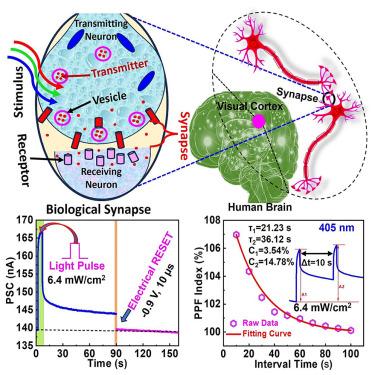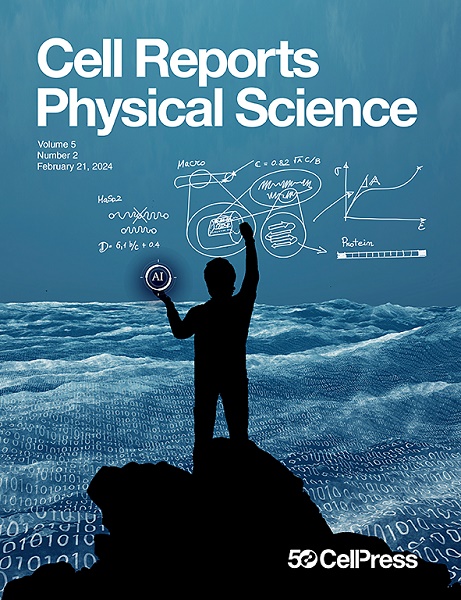Optoelectronic wide-band-gap oxide-based memristor for mimicking human eye sensory perception and object tracking
IF 7.3
2区 综合性期刊
Q1 CHEMISTRY, MULTIDISCIPLINARY
引用次数: 0
Abstract
By integrating sensing, processing, and memory functionalities, the human sensory systems are extraordinarily energy and power efficient. Here, we report a ZnSnO (ZTO)/InO-based optoelectronic device that senses varying light intensities and perceives different motion behaviors. The device exhibits exceptional voltage-activated synaptic properties, encompassing features such as short-term and long-term plasticity, alongside notable light-sensitive characteristics that enable diverse light-triggered synaptic functions. Through simultaneous light and electrical voltage signals, we achieve light-enhanced/electrically erasing behavior, light-initiated paired-pulse facilitation (PPF), and learning-forgetting-relearning processes by tuning the 405 nm wavelength optical light. Furthermore, by manipulating charge dynamics through light intensity and duration, we replicate the basic sensing and perception function of the human eyes as a volatile receptor, showing potential for artificial retina applications. The device also demonstrates the capability to track objects and eye movement, holding promise for virtual reality systems.

基于光电宽带隙氧化物的忆阻器,用于模拟人眼感知和物体跟踪
人类的感官系统集成了传感、处理和记忆功能,因此非常节能省电。在此,我们报告了一种基于氧化锌(ZTO)/氧化铟(InO)的光电器件,它能感知不同的光强度并感知不同的运动行为。该器件具有卓越的电压激活突触特性,包括短期和长期可塑性,以及显著的光敏特性,可实现多种光触发突触功能。通过同时发出光信号和电压信号,我们实现了光增强/电擦除行为、光引发的配对脉冲促进(PPF),以及通过调整 405 nm 波长的光学光进行学习-遗忘-再学习的过程。此外,通过光强度和持续时间操纵电荷动态,我们复制了人眼作为挥发性受体的基本感应和感知功能,显示了人工视网膜应用的潜力。该装置还展示了跟踪物体和眼球运动的能力,为虚拟现实系统带来了希望。
本文章由计算机程序翻译,如有差异,请以英文原文为准。
求助全文
约1分钟内获得全文
求助全文
来源期刊

Cell Reports Physical Science
Energy-Energy (all)
CiteScore
11.40
自引率
2.20%
发文量
388
审稿时长
62 days
期刊介绍:
Cell Reports Physical Science, a premium open-access journal from Cell Press, features high-quality, cutting-edge research spanning the physical sciences. It serves as an open forum fostering collaboration among physical scientists while championing open science principles. Published works must signify significant advancements in fundamental insight or technological applications within fields such as chemistry, physics, materials science, energy science, engineering, and related interdisciplinary studies. In addition to longer articles, the journal considers impactful short-form reports and short reviews covering recent literature in emerging fields. Continually adapting to the evolving open science landscape, the journal reviews its policies to align with community consensus and best practices.
 求助内容:
求助内容: 应助结果提醒方式:
应助结果提醒方式:


